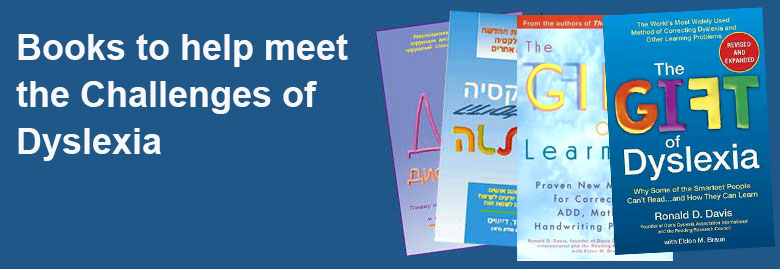Originally published in The Dyslexic Reader,
Issue 10 Copyright (c) Summer 1997 year DDAI.
The Joy of Clay: A quick tour of the world of modeling compounds
By Abigail Marshall
The Gift of Dyslexia recommends using plastelina clay, one to two pounds per person for Symbol Mastery. Plastelina, also know as plasticene, is oil-based, non-hardening clay. A good grade of clay will last forever. You can leave it out for months on end, then pick it up, knead it, roll it – and it is as soft and malleable as ever. This makes it perfect for Symbol Mastery; you can do the full Davis program with one block of clay.
The Symbol Mastery Kit contains Roma Plastelina #2, made by Standard Clay Mines in New Jersey. We usually ordered ivory colored clay. Recently, the manufacturer ran out of ivory clay, and said we would have to wait until they mixed up another batch. They offered gray clay instead.
I asked Dwight Underhill, a Facilitator at the Reading Research Council, why we needed ivory clay. He explained, “Different colors can trigger disorientations for clients. You never know what color it might be. With some people it’s red, others trigger on black or brown. I’ve seen just about every color cause problems for somebody. That’s why we work with a light, neutral shade.”
Ron Davis gave me another, more pragmatic reason. “The oil from the clay will stain,” he said. “Colored dyes mixed with the oil can ruin people’s clothes.”
I tried to find plasticene on the Internet, and found a recipe for mixing our own instead. “Melt 10 pounds of microcrystalline wax, mix with a half gallon of motor of and 4 pounds of automotive grease, then stir in 25 pound of dry clay powder.” I decided that this was not a good project for me.
I went to the local art supply store. They had Roma Plastelina in a gun metal green, and Van Aken plastelina in every color imaginable. I bought a one pound package of Van Aken plastelina to try out.
Van Aken plastelina was softer than the Roma Plastelina #2. It may be too soft for Symbol Mastery, where it is important to mold little clay animals and people that will stand up on their little clay legs and little clay feet, without drooping. When I made a little clay cat with Van Aken plastelina, it lay down and went to sleep.
However, small children might prefer working with a softer clay, and Symbol Mastery artists who favor figures with wide bases and big clay feet probably can do fine with softer clay by putting it in the refrigerator (or soften still clay in the microwave).
Dorothy Owen, who has sponsored Davis workshops in Texas, gave us some Glow Dough, made in Spain, which glows in the dark. This clay is soft and pliable, and it does, in fact, glow eerily when you turn out the lights, but it comes I very small packages. It’s probably too expensive to use for Symbol Mastery on a regular basis, but it seems like it would be fun every once in a while.
While I was shopping for Symbol Mastery clay, my son asked me to pick up some Sculpey III, a polymer clay made by Polyform Products Company. Unlike plasticene, it can harden. In fact, it will harden when baked in home ovens at 275 degrees for 15 minutes.
Sculpey comes in a variety of colors, is soft and hold its shape well, and is reusable if not baked. My son, in fact, used it to make his own ‘claymation’ (animation with clay figure) video. Sculpey is firm enough to hold its shape, so little clay Sculpey animals and people do stand up on their little clay feet, even when you move their arms and legs around. My son made a very short film called The Mangled Magician, featuring a little clay sorcerer who suffered little clay mishaps.
Polyform Products also make a clay called upper Elasticlay, a cream-colored polymer that becomes rubbery and flexible after baking. If you are fond of the little clay animals and people you make, you can bake them for 15 minutes and have little clay poseable dolls.
Sometimes people ask us if they can use play dough for Symbol Mastery. This is not a good idea, because play dough (either store-bought or homemade) does not have the consistency needed to hold its shape well. However, it is a good way for very small children to get used to rolling and shaping with their hands. Soft dough is also good for other educational projects – my son once was assigned to model cell structure using all edible materials, and chose to use pizza dough.
All in all, once you get started working (and playing) with clay, it’s hard to stop.






